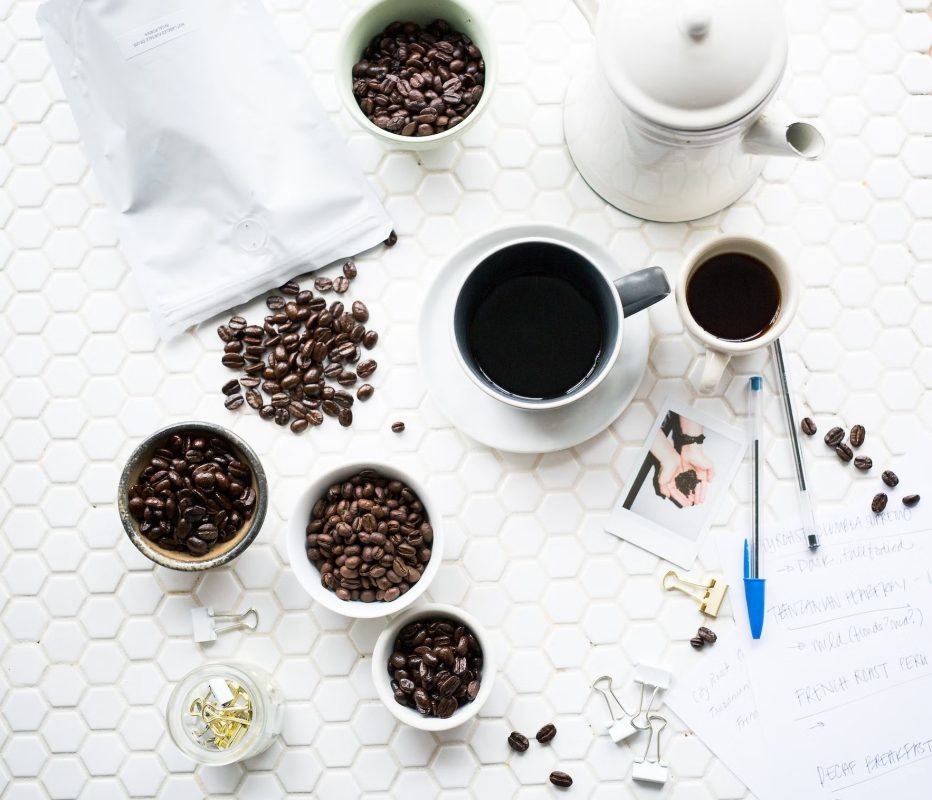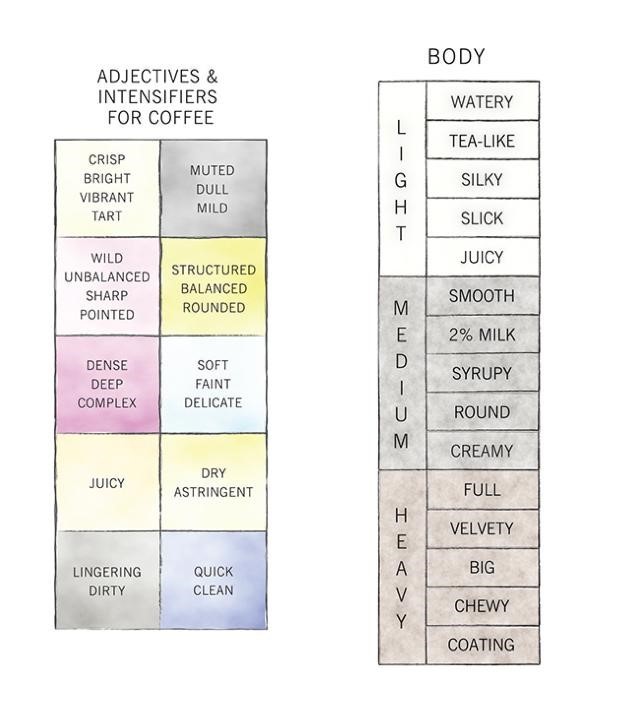Coffee body represents one of the most crucial elements in professional coffee cupping techniques, yet fully understanding coffee body characteristics remains challenging for many. Therefore, to help baristas develop a more precise understanding of coffee body fundamentals, Hello 5 Coffee will guide you through exploring the concept and various factors that impact coffee body quality.

What is Coffee Body?
Coffee body is a specialized terminology used to describe the physical characteristics (texture and mouthfeel) of brewed coffee. Simply put, coffee body refers to the richness, thickness, or intensity of coffee’s tactile sensation.
Body is best perceived when coffee makes complete contact with the oral cavity and covers the entire tongue surface during tasting. This allows taste receptors on the tongue to receive maximum exposure to coffee’s flavor components (including acids, proteins, carbohydrates, essential oils, aromatic compounds, etc.), providing detailed and accurate feedback signals about the coffee’s physical properties: whether it’s full-bodied, medium-bodied, or light-bodied. Alongside acidity and flavor profiles, coffee body stands as one of three essential characteristics that professional baristas consistently evaluate.

Coffee Body Classifications
There are three distinct levels of coffee body perception:
1. Light Body – Bright and Clean
This represents the lightest, thinnest body level with minimal residue or lingering flavors on the tongue tip. Typically, coffee beans cultivated at lower altitudes in nutrient-deficient soils exhibit these characteristics. Additionally, extraction methods utilizing paper filters to remove oils and solid particles can result in coffee with bright body properties.
2. Heavy Body – Full and Rich
This body tier is also known as full body, delivering the highest intensity perception in coffee and creating a powerful sensation that fills the entire palate. Heavy body results from the tight integration of fats, proteins, and fiber content present in coffee beans. Coffee varieties grown under shade coverage, particularly in volcanic soil conditions with slow development processes and complete flavor accumulation within the beans, produce coffee with heavy body characteristics.
3. Medium Body – Balanced
This perception level falls between light-bodied and heavy-bodied coffee, offering a more balanced texture that provides moderate, pleasant sensations compared to the extreme attributes of the other two distinct categories.

Factors That Impact Coffee Body
1. Coffee Origin and Variety
In practice, certain coffee cultivars possess more distinctive body characteristics compared to other coffee varieties. These are natural traits that are difficult to modify through cultivation or harvesting interventions. For example, the Maracaturra variety from El Salvador, Guatemala exhibits a full and “rounded” body profile, while Pacamara coffee displays medium body levels with prominent fruity flavor notes.
2. Processing Methods
Multiple practical experiments demonstrate that coffee processed using wet methods produces delicate and subtle body characteristics. Naturally dry-processed coffee delivers stronger body properties with a more complete mouthfeel sensation. Honey-processed coffee also provides body characteristics similar to dry processing methods. This indicates that processing techniques that retain more mucilage on coffee cherries have greater potential for enhancing body in the final coffee cup.
3. Coffee Roasting Techniques
Skilled roasters possess the ability to control necessary factors for highlighting each coffee type’s flavor potential, thereby modifying corresponding coffee body characteristics. According to Perfect Daily Grind research, body can be adjusted by controlling the duration between the first crack occurrence during roasting. Extending the time to first crack prolongs Maillard reactions within the beans, resulting in increased melanoidin production and creating a fuller body layer.
4. Coffee Brewing Methods
Different manual coffee brewing techniques and appropriate brewing equipment can adjust body according to desired preferences:
Examples:
- French press and AeroPress brewing methods can influence steeping time and add slight pressure to determine how much body is extracted according to preference.
- Pour-over techniques using various filter papers extract coffee with corresponding intensity levels by allowing more or fewer oils to pass through the filtration system.
- Espresso brewing technique relies on machine pump pressure to create the golden-brown crema layer, containing oils and melanoidins that contribute to full-bodied coffee extraction.
